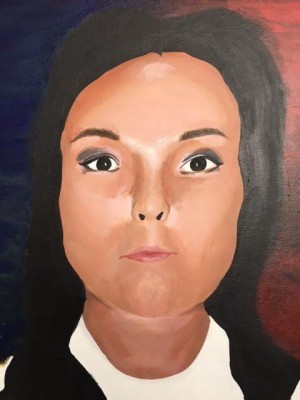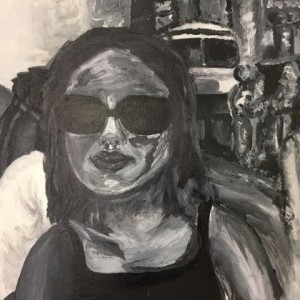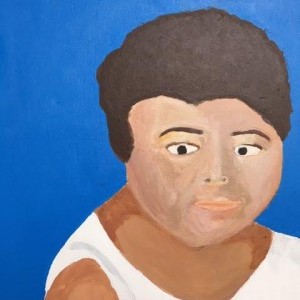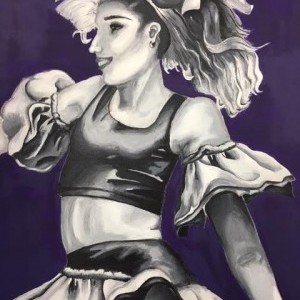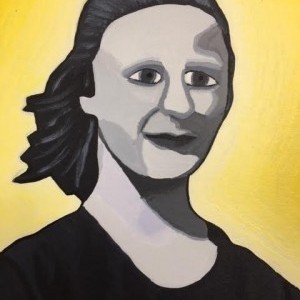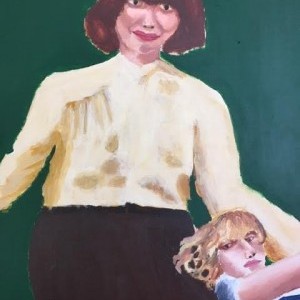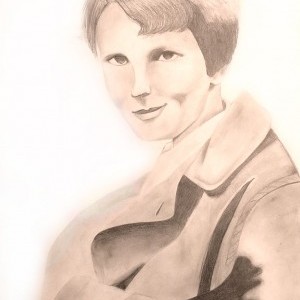Lilian Kim
Immaculate Heart High School | Los Angeles, CA | 9-12th Grade
Inspirational Family Member
My Mother
Women in my family have always been granted the right to vote. Before the Japanese colonialism, Korea operated as a monarchy, so no one was granted the right to vote. However, after a lengthy revolution and war, Korea was finally free of the Japanese, but unfortunately, Korea would be divided between the two nations that had helped them, the communist Soviet Union and the democratic United States. The south adopted the United States’ democratic government, and the north adopted communism.
South Korea, where my mother was born, always granted both women and men the right to vote ever since the end of the Japanese colonialism. This does not mean that my mom did not encounter sexism. Korea is still a highly patriarchal society, but women were never discriminated in terms of voting rights.
My mom is the youngest of five siblings, and she had a pretty happy childhood. But because South Korea was experiencing a significant economic boom after World War II, my mom’s family sometimes struggled amidst rapid industrialization. After college, she was an interior designer in Korea until she immigrated to America. When she arrived in America in 1996, it was after the 1920 amendment that allowed all American women to vote, so she never faced discrimination at the voting booths. My mom was granted citizenship in 2010, however, she has never voted in a U.S election before. She had in South Korea, however. She compares it to the excitement you get when driving for the first time or the first day of school, it feels important because it is the first time, but the thrill of it is lost after a while. Here, her degree in design didn’t really mean much, and she couldn’t afford to go back to school, so she learned a trade instead. She went to a beauty school to learn how to be a nail artist, and she said that it was really hard and depressing for the first 8 years she was in it because she had no say over what she did. However, once she got the hang of things and opened up her own shop, she was content with what she did. Her first nail salon, MOMA, was named after her favorite art museum in New York.
She says that as a native Korean person, sexism exists but is never really addressed. She would always be subordinate to her father and brother, and at work, her male bosses could abuse their power against her and other female coworkers without any repercussions. My mom states that she never spoke up because it was a fact of life, and almost normal for things like this to fly under the radar. However, she says she doesn’t regret her decision of not speaking up because if she did, there would have only been more trouble for her and other women. She says that the sad reality is that only women who have the luxury to speak up can do so because they have a net to fall back on, such as an extra income or emotional/economic support from family and friends. But to my mother, who not only had to work for herself but also for her family, she simply couldn’t afford to do so.
Historical Figure I Admire
Inez Milholland Boissevain
Inez Milholland Boissevain was born in New York, in the late 19th century, into an affluent family supported by her father’s successful mail businesses. It was her mother that introduced her to intellectual curiosities, taking her and her siblings on trips to the museum. Inez spent much of her schooling and teenage years in London, at a progressive high school called Kensington High School, which allowed girls from different classes to attend school as equals. Inez decided to attend college in the United States. She attended Vassar College, and there she pushed herself, taking every extracurricular offerings and filled up every class slot available. In college, Inez became more than just an ambitious student.
In London, Inez had become associated with a suffragette named Emmeline Pankhurst. Emmeline Pankhurst and her supporters were known for their organization, the Women’s Social and Political Union, whose aggressive approach to protests made them infamous around London. Her influence followed Inez to the States, where in her sophomore year, she decided to bring the suffrage movement to Vassar College. However Vassar College’s vice president, James Monroe Taylor, strictly opposed the suffrage movement, banned the topic from campus. This sparked an outrage in Inez, who responded with multiple off-campus meetings discussing suffragette topics, and eventually persuaded Taylor to host a debate, under the impression that faculty were not to take part. However this backfired, as multiple professors voiced their support.
By the time Inez had graduated from Vassar college, over 50% of the student body was a part of the women’s suffrage group she had created. After graduation, Inez applied to law schools such as Harvard, Yale, and Columbia, however she was rejected because of her sex. She enrolled at New York University, and graduated only three years later. During her years as a law student, Inez continued her mission of fighting for the underdog. Her most famous public appearance was in Washington D.C., in 1913, during which Inez rode a brilliant white horse in a suffrage parade only a day before President Woodrow Wilson’s inauguration.
Inez Milholland Boissevain was not only an advocate for women’s rights, she also was an active member of the Women’s Trade Union League and the National Association for the Advancement of Colored People. Inez’s final years were still dedicated to peace. In the beginnings of World War I, Inez used her resources to join the Ford Peace Ship, an ocean liner used to conduct peace negotiations to prevent World War I.
Inez returned to the States in 1916 and joined the National Women’s Party, campaigning women’s rights from state to state. However, in 1916, Inez passed away in the young-age of 30 of pernicious anemia during her tour in Los Angeles. Inez Milholland Boissevain lived in the late 18th century to the early 19th century, where women were still exempt from voting and barred from various universities. Such was the case of Inez, who was barred from prestigious law schools because of sex, not merits. Inez’s incredible capacity for compassion for the disadvantaged despite being a upper-class, white women defined her vehement activism. The inauguration of Woodrow Wilson proved devastating for suffragettes, as he ignored the widespread calls for reform among both men and women across America. However in 1920, the 19th amendment was ratified, allowing women the right to vote. But this did not include all women, most women of color were excluded from this bill.
The fight for women’s rights was not quite over, however, the 19th amendment had cracked the glass ceiling, it would only be a matter of time before it would be completely broken. It was because of Inez Milholland Boissevain’s efforts that inspired millions of people around America, if not, the world. What made Inez unique from the many suffragettes and feminism was her aversion towards white feminism. White feminism, defined by only focusing on the struggles faced by white women while disregarding the unique struggles of other minorities, was rampant in the time of racist America. Inez, who grew up affluent and privileged, is someone who would most likely exhibit traits of white feminism, however, Inez’s open-mindedness and compassion was quite extraordinary considering the social norms and her childhood. Through Inez’s fight for equality for all, she set a new standard for what it meant to be both a women suffragist and a feminist.
Explore the Archive
More From This Class
Click on the thumbnails below to view each student's work.Deadline Extended
There's still time to join Women Leading the Way.
Become a part of our storytelling archive. Enroll your class today.
Join the Project

